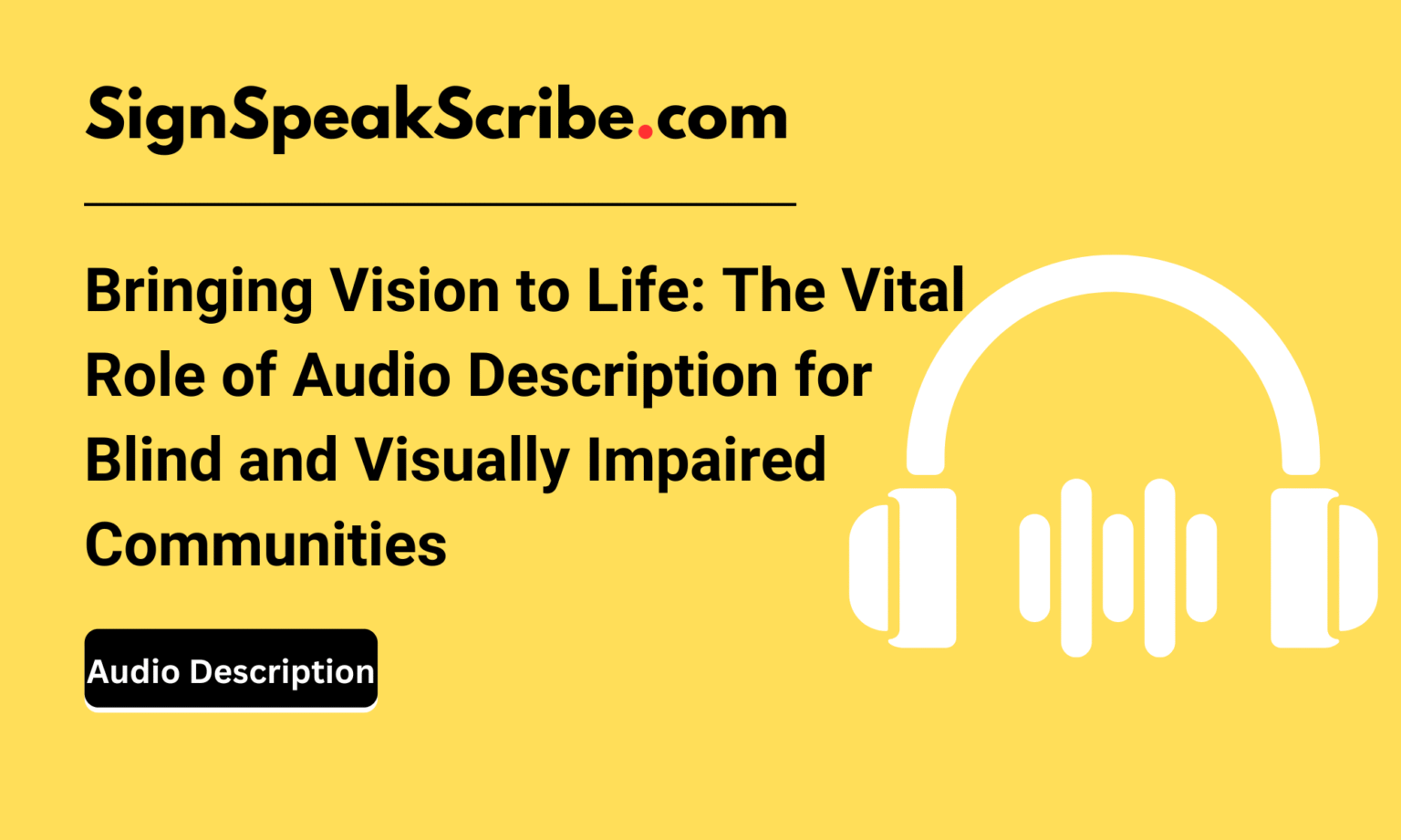Across the United States and Canada, millions of individuals live with blindness or low vision—navigating a world that often overlooks the importance of accessible visual content. With over 7 million blind or visually impaired Americans and approximately 1.5 million Canadians experiencing sight loss, the need for inclusive media and environments has never been greater. One of the most impactful tools for accessibility is audio description—a service that provides vital access to visual information for people who cannot see it.
What Is Audio Description?
Audio description (AD) is a form of narration that makes visual media accessible by describing essential visual elements. This includes actions, facial expressions, scene transitions, costumes, and on-screen text. The narration is woven into natural pauses in dialogue or sound, creating a richer, more inclusive experience for blind or low-vision audiences.
Audio description can be pre-recorded or delivered live, and it’s used in a variety of settings—from blockbuster films and television to live theater, museum tours, and sporting events. Also referred to as descriptive video, video description, or described audio, this service is critical to full participation in cultural, educational, and civic life.
Industries That Rely on Audio Description
The need for audio description spans multiple sectors, and each industry presents unique career opportunities for those with the right skills:
1. Media and Entertainment
Major streaming services like Netflix, Disney+, Apple TV+, and national broadcasters such as PBS and CBC now include audio-described content as part of their accessibility compliance. These organizations rely on:
- Audio Describers to script visual content
- Voice Talent to narrate descriptions
- Quality Control Editors to ensure accessibility standards are met
- Accessibility Coordinators to oversee inclusive media strategy
2. Performing Arts and Live Events
Theaters, ballet companies, music festivals, and opera houses increasingly offer live audio description during performances. These live describers must skillfully and quickly narrate unfolding action while remaining unobtrusive to other attendees. Jobs in this field include:
- Live Audio Describers
- Event Accessibility Planners
- Arts Inclusion Consultants
3. Museums and Exhibits
Institutions like museums, zoos, aquariums, and cultural centers are embracing audio description to enhance the experience of blind and low-vision visitors. Opportunities exist for:
- Scriptwriters for tour narration
- Narrators for multimedia exhibits
- Producers of accessible digital content
4. Education
Educational institutions are increasingly required to provide accessible video and learning materials. Audio description professionals work with:
- K-12 schools and universities
- Instructional designers
- Online course developers
to make learning more equitable through described educational videos and presentations.
5. Sports and Public Events
From stadiums and arenas to the Olympics, sporting organizations are integrating live AD broadcasts for attendees who are blind or have low vision. Typical roles include:
- Sports Describers
- Event Accessibility Coordinators
- Technical Support for AD delivery systems
6. Government and Public Sector
Public-facing media like voting information, legal proceedings, and safety announcements increasingly include audio description. Governments and nonprofits employ or contract:
- Accessibility Media Specialists
- AD Script Editors
- Video Producers with inclusion expertise
7. Technology and Software
Tech companies that produce apps, websites, and digital products often require:
- UX Designers to build inclusive interfaces
- Developers who integrate AD functionality
- QA Testers to ensure compliance with accessibility guidelines like WCAG and ADA standards
Growing Career Paths in Audio Description
As inclusion and accessibility become non-negotiable standards in digital and physical spaces, the demand for trained audio description professionals continues to grow. Whether your background is in media, education, performance, or writing, this field offers creative and meaningful career options that serve a vital purpose in society.
Platforms like SignSpeakScribe.com are proud to highlight these opportunities for accessibility professionals and help employers connect with qualified audio describers across North America. By promoting job visibility and career development in audio description, we’re helping build a more inclusive world—one voice at a time.

